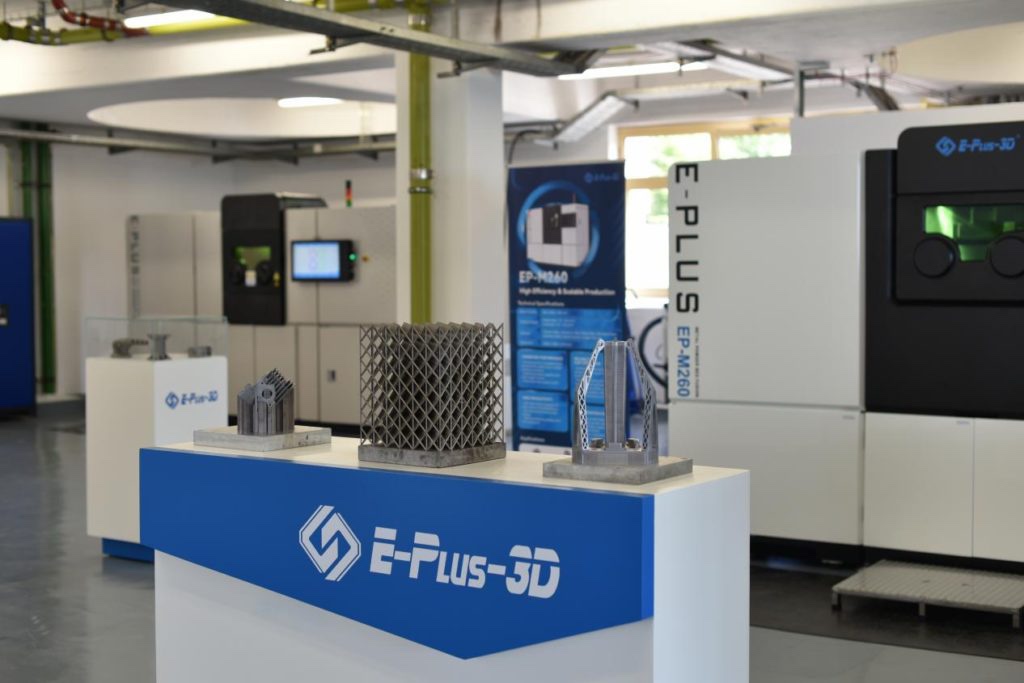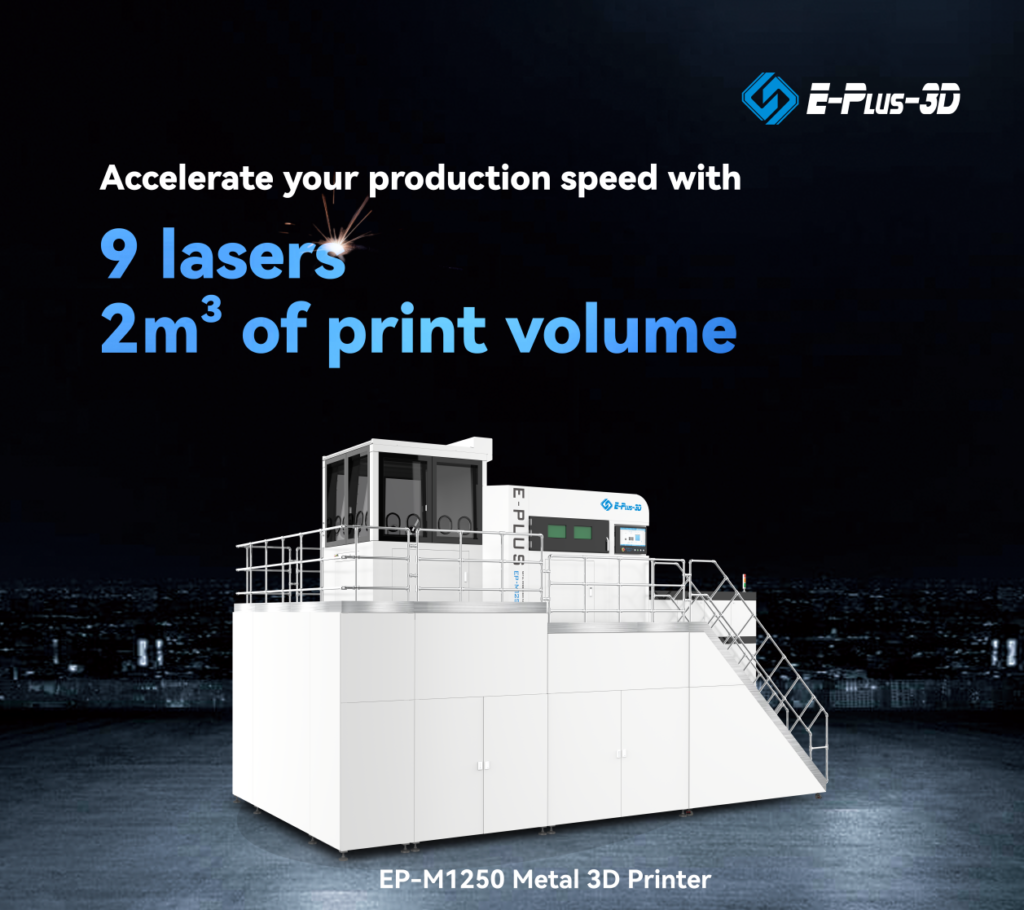So far in Q4, one of the main themes for original equipment manufacturers (OEMs) in China’s additive manufacturing (AM) sector is an increasing emphasis on large-format, multi-laser metal platforms. EPlus3D just announced the latest example of that trend with the launch of its nine-laser EP-M1250, compatible with a wide range of metal powders.
Perhaps even more impressive than the laser count is the volume of the build chamber. With over two cubic meters (1258 mm x 1258 mm x 1350 mm) of capacity, the EP-M1250 will easily be one of the largest format metal platforms on the market, if not the largest. After all, the system that SLM Solutions is developing with the U.S. Air Force measures just 600 mm x 600 mm x 1500 mm, just over half a cubic meter. EPlus3D will be exhibiting numerous items printed by the new system at this month’s Formnext (November 15-18) in Frankfurt, at booth E22 in Hall 12.
Unsurprisingly, the initial target market for the EP-M1250 is the aerospace sector, with EPlus3D noting in its press release that the company has already received three orders from aerospace firms for the new machine. Additionally, as with all large-format metal platforms, the EP-M1250 will likely receive interest from the energy, oil & gas sectors, and the automotive industry.

German and Chinese Symbiosis
In that context, EPlus3D seems to have perfectly timed this release to line up with the company’s recent opening of its European headquarters in Germany. As I’ve noted in multiple posts over the past couple of months, alongside more lasers and larger build capacities, a tighter connection to the German market is the other major trend defining the recent activity of Chinese OEMs in the AM sector.

The EU is currently experiencing what is an unprecedented energy supply crisis for its industrial base, and that crisis seems unlikely to wane for the foreseeable future. Germany — the EU’s most important economy and one of the world’s most vital geographic links between manufacturing and maritime traffic — clearly needs to assert control over its heavy industrial base as firmly and as quickly as possible. Considering the rate at which the nation’s dependence on imports from China is increasing, one way that Germany can attempt to ensure industrial stability is by shifting the supply chain for its heavy Chinese imports, from overseas transport to on-demand production in Germany.
That would obviously be a many-years-long, uniquely complicated process. Nevertheless, one major development signaling the realistic potential for that outcome is the finalization of a deal between a division of China’s largest shipping and port management company, China COSCO Shipping Ltd, and German port operator Hamburger Hafen und Logistik AG (HHLA). The German government approved China COSCO Shipping’s acquisition of a 24.9 percent stake in Container Terminal Tollerort, one of HHLA’s three Hamburg terminals.
The deal is not without its controversy, and COSCO had to agree to lower its initial bid from a 35 percent stake to just under 25 percent to get the agreement done. But the deal seems likely to be related to others that the same division of COSCO is simultaneously making. One involves divestment in a stake from its Duisburg, Germany terminal, and the other entails buying nearly $3 billion in port assets from its parent company in China, with the goal of digitalizing supply chains for customers. Whatever the details are, COSCO seems to be in the midst of a rapid-fire revamping of its global trade networks.
Images courtesy of EPlus3D
Subscribe to Our Email Newsletter
Stay up-to-date on all the latest news from the 3D printing industry and receive information and offers from third party vendors.
You May Also Like
Supply Chain Management and the Role of 3D Printing Digital Inventories
As the additive manufacturing (AM) industry grows beyond its humble roots as a rapid prototyping technology, it has been adopted by some of the world’s leading companies to produce not...
3D Printing Webinar and Event Roundup: April 28, 2024
In this week’s 3D Printing Webinar and Event Roundup, the Ceramics Expo is taking place in Michigan, Stratasys continues its advanced training courses, and SPE is holding a Polymer Characterization...
$25M to Back Sintavia’s Largest Expansion of Metal 3D Printing Capacity Since 2019
Sintavia, the digital manufacturing company specializing in mission-critical parts for strategic sectors, announced a $25 million investment to increase its production capacity, the largest expansion to its operations since 2019....
Velo3D Initiates Public Offering in a Bid to Strengthen Financial Foundations and Drive Future Growth
Velo3D (NYSE: VLD) has been among a number of publicly traded 3D printing firms that have attempted to weather the current macroeconomic climate. After posting a challenging financial report for 2023,...































